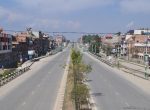
Getting back to our little problem, I have highlighted in red the variables which have failed the Chi-square(1) test at a significance level of 0.05 (95% confidence level). The first factor is the partial likelihood shown below, in which the baseline hazard has "canceled out". \(\hat{S}(54) = 0.95 (1-\frac{2}{20}) = 0.86\) 0 Interpreting the output from R This is actually quite easy. Well soon see how to generate the residuals using the Lifelines Python library. Further more, if we take the ratio of this with another subject (called the hazard ratio): is constant for all \(t\). and Accessed 5 Dec. 2020. x Thus, the baseline hazard incorporates all parts of the hazard that are not dependent on the subjects' covariates, which includes any intercept term (which is constant for all subjects, by definition). Notice that this strategy effectively fixes the value of response variable y to a known value (30 days) and it makes X30[][0] i.e. Proportional_hazard_test results (test statistic and p value) are same irrespective of which transform I use. The proportional hazard assumption implies that \(\hat{\beta_j} = \beta_j(t)\), hence \(E[s_{t,j}] = 0\). t exp ( Copyright 2014-2022, Cam Davidson-Pilon Lets look at the formula for the expectation again: David Schoenfeld, the inventor of the residuals has, Notice that the formula for the expectation is completely independent of time. Again, use our example of 21 data points, at time 33, one person our of 21 people died. 81, no. ) Your Cox model assumes that the log of the hazard ratio between two individuals is proportional to Age. Hi @MetzgerSK - thanks for the (very) detailed report. The Lifelines library provides an implementation of Schoenfeld residuals via the compute_residuals method on the CoxPHFitter class which you can use as follows: CPHFitter.compute_residuals will compute the residuals for all regression variables in the X matrix that you had supplied to your Cox model for training and it will output the residuals as a Pandas DataFrame as follows: Lets plot the residuals for AGE against time: Its hard to tell objectively if there are no time based patterns caused by auto-correlations in the above plot. In our example, training_df=X. 0 So, the result summary is: . It is also common practice to scale the Schoenfeld residuals using their variance. \end{align}\end{split}\], \(\hat{S}(t_i)^p \times (1 - \hat{S}(t_i))^q\), survival_difference_at_fixed_point_in_time_test(), survival_difference_at_fixed_point_in_time_test, Piecewise exponential models and creating custom models, Time-lagged conversion rates and cure models, Testing the proportional hazard assumptions. 0 Hi @CamDavidsonPilon , thanks for figuring this out. This function can be maximized over to produce maximum partial likelihood estimates of the model parameters. The expected age of at-risk volunteers in R_30 can be calculated by the usual formula for expectation namely the value times the probability summed over all values: In the above equation, the summation is over all indices in the at-risk set R30. 2.12 size. Hazard ratio between two subjects is constant. To stratify AGE and KARNOFSKY_SCORE, we will use the Pandas method qcut(x, q). All images are copyright Sachin Date under CC-BY-NC-SA, unless a different source and copyright are mentioned underneath the image. - Sat. In which case, adding an Age term might fix your model. Ask Question Asked 2 years, 9 months ago. Lets run the same two tests on the residuals for PRIOR_SURGERY: We see that in each case all p-values are greater than 0.05 indicating no auto-correlation among the residuals at a 95% confidence level. Exponential distribution is a special case of the Weibull distribution: x~exp()~ Weibull (1/,1). In a simple case, it may be that there are two subgroups that have very different baseline hazards. \end{align}\end{split}\], \[\begin{split}\begin{align} Copyright 2014-2022, Cam Davidson-Pilon privacy statement. the age of the volunteer as the random variable having an expected value and a variance! Notice that we have log-transformed the time axis to reduce the influence of outliers. If the objective is instead least squares the non-negativity restriction is not strictly required. The Cox model is used for calculating the effect of various regression variables on the instantaneous hazard experienced by an individual or thing at time t. It is also used for estimating the probability of survival beyond any given time T=t. Their progress was tracked during the study until the patient died or exited the trial while still alive, or until the trial ended. Next, we subtract the observed age from the expected value of age to get the vector of Schoenfeld residuals r_i_0 corresponding to T=t_i and risk set R_i. {\displaystyle t} The second factor is free of the regression coefficients and depends on the data only through the censoring pattern. However, consider the ratio of the companies i and j's hazards: All terms on the right are known, so calculating the ratio of hazards between companies is possible. This is detailed well in Stensrud & Hernns Why Test for Proportional Hazards? [1]. I'll look into this soon. At time 54, among the remaining 20 people 2 has died. = This is implemented in lifelines lifelines.survival_probability_calibration function. It would be nice to understand the behaviour more. A vector of shape (80 x 1), #Column 0 (Age) in X30, transposed to shape (1 x 80), #subtract the observed age from the expected value of age to get the vector of Schoenfeld residuals r_i_0, # corresponding to T=t_i and risk set R_i. The event variable is:STATUS: 1=Dead. t #The regression coefficients vector of shape (3 x 1), #exp(X30.Beta). 8.32 I haven't made much progress, unfortunately. {\displaystyle X_{i}} & H_0: h_1(t) = h_2(t) \\ This is implemented in lifelines lifelines.utils.k_fold_cross_validation function. Schoenfeld, David. j {\displaystyle \lambda _{0}(t)} Already on GitHub? This means that we split a subject from a single row into \(n\) new rows, and each new row represents some time period for the subject. 515526. However, Cox also noted that biological interpretation of the proportional hazards assumption can be quite tricky. The function lifelines.statistics.logrank_test() is a common statistical test in survival analysis that compares two event series' generators. Grambsch, Patricia M., and Terry M. Therneau. {\displaystyle P_{i}} Copyright 2020. representing the hospital's effect, and i indexing each patient: Using statistical software, we can estimate Like most things, the optimial value is somewhere inbetween. 2.12 Proportional hazards models are a class of survival models in statistics. In Cox regression, the concept of proportional hazards is important. respectively. Schoenfeld residuals are so wacky and so brilliant at the same time that their inner workings deserve to be explained in detail with an example to really understand whats going on. Do I need to care about the proportional hazard assumption? For example, assuming the hazard function to be the Weibull hazard function gives the Weibull proportional hazards model. , takes the place of it. \(d_i\) represents number of deaths events at time \(t_i\), \(n_i\) represents number of people at risk of death at time \(t_i\). to be 2.12. Your model is also capable of giving you an estimate for y given X. The Null hypothesis of the two tests is that the time series is white noise. So if you are avoiding testing for proportional hazards, be sure to understand and able to answer why you are avoiding testing. Well occasionally send you account related emails. [3][4], Let Xi = (Xi1, , Xip) be the realized values of the covariates for subject i. Above I mentioned there were two steps to correct age. For the attached data, using weights, I get from Lifelines: Whereas using a row per entry and no weights, I get {\displaystyle x} *do I need to care about the proportional hazard assumption? Kaplan-Meier and Nelson-Aalen models are non-parametic. Even under the null hypothesis of no violations, some covariates will be below the threshold by chance. There is a relationship between proportional hazards models and Poisson regression models which is sometimes used to fit approximate proportional hazards models in software for Poisson regression. ) This also explains why when I wrote this function for lifelines (late 2018), all my tests that compared lifelines with R were working fine, but now are giving me trouble. However, a. At the core of the assumption is that \(a_i\) is not time varying, that is, \(a_i(t) = a_i\). For example, taking a drug may halve one's hazard rate for a stroke occurring, or, changing the material from which a manufactured component is constructed may double its hazard rate for failure. 2000. to your account. {\displaystyle x} check: residual plots ( & H_A: h_1(t) = c h_2(t), \;\; c \ne 1 Park, Sunhee and Hendry, David J. ( ( For the streg command, h 0(t) is assumed to be parametric. This is a time-varying variable. ( In the above scaled Schoenfeld residual plots for age, we can see there is a slight negative effect for higher time values. All images are copyright Sachin Date under CC-BY-NC-SA, unless a different source and copyright are mentioned underneath the image. The Statistical Analysis of Failure Time Data, Second Edition, by John D. Kalbfleisch and Ross L. Prentice. 0 i The proportional hazard assumption is that all individuals have the same hazard function, but a unique scaling factor infront. As mentioned in Stensrud (2020), There are legitimate reasons to assume that all datasets will violate the proportional hazards assumption. But in reality the log(hazard ratio) might be proportional to Age, Age etc. {\displaystyle \exp(\beta _{1})=\exp(2.12)} A typical medical example would include covariates such as treatment assignment, as well as patient characteristics such as age at start of study, gender, and the presence of other diseases at start of study, in order to reduce variability and/or control for confounding. We will test the null hypothesis at a > 95% confidence level (p-value< 0.05). Accessed November 20, 2020. http://www.jstor.org/stable/2985181. This new API allows for right, left and interval censoring models to be tested. Identity will keep the durations intact and log will log-transform the duration values. ) This was more important in the days of slower computers but can still be useful for particularly large data sets or complex problems. If these baseline hazards are very different, then clearly the formula above is wrong - the \(h(t)\) is some weighted average of the subgroups baseline hazards. Proportional Hazards Tests and Diagnostics Based on Weighted Residuals. Biometrika, vol. See ) Details and software (R package) are available in Martinussen and Scheike (2006). in it). ) Also included is an option to display advice to the console. However, this usage is potentially ambiguous since the Cox proportional hazards model can itself be described as a regression model. Perhaps as a result of this complication, such models are seldom seen. The effect of covariates estimated by any proportional hazards model can thus be reported as hazard ratios. <lifelines> Solving Cox Proportional Hazard after creating interaction variable with time. At t=360, the mean probability of survival of the test set is 0. time_transform: This variable takes a list of strings: {all, km, rank, identity, log}. . ) precomputed_residuals: You get to supply the type of residual errors of your choice from the following types: Schoenfeld, score, delta_beta, deviance, martingale, and variance scaled Schoenfeld. NEXT: Estimation of Vaccine Efficacy Using a Logistic RegressionModel. This is especially useful when we tune the parameters of a certain model. From the earlier discussion about the Cox model, we know that the probability of the jth individual in R30 dying at T=30 is given by: We plug this probability into the earlier equation for E(X30[][0]) to get the following formula for the expected age of individuals who were at risk of dying at T=30 days: Similarly, we can get the expected values for PRIOR_SURGERY and TRANSPLANT_STATUS regression variables by replacing the index 0 in the above equation with 1 and 2 respectively. The concept here is simple. 10:00AM - 8:00PM; Google+ Twitter Facebook Skype. It runs the Chi-square(1) test on the statistic described by Grambsch and Therneau to detect whether the regression coefficients vary with time. Possibly. {\displaystyle \lambda (t\mid X_{i})} The easiest way to estimate the survival function is through the Kaplan-Meiser Estimator. [1] Klein, J. P., Logan, B. , Harhoff, M. and Andersen, P. K. (2007), Analyzing survival curves at a fixed point in time. ( 0 The generic term parametric proportional hazards models can be used to describe proportional hazards models in which the hazard function is specified. Three regression models are currently implemented as PH models: the exponential, Weibull, and Gompertz models.The exponential and. Presented first are the results of a statistical test to test for any time-varying coefficients. The value of the Schoenfeld residual for Age at T=30 days is the mean value (actually a weighted mean) of r_i_0: In practice, one would repeat the above procedure for each regression variable and at each time instant T=t_i at which the event of interest such as death occurs. For now, lets compute the Schoenfeld residual errors of the regression model: Now lets perform the proportional hazards test: The test statistic obeys a Chi-square(1) distribution under the Null hypothesis that the variable follows the proportional hazards test. http://eprints.lse.ac.uk/84988/1/06_ParkHendry2015-ReassessingSchoenfeldTests_Final.pdf, This computes the power of the hypothesis test that the two groups, experiment and control, That would be appreciated! P 1 How this test statistic is created is itself a fascinating topic to study. It is not uncommon to see changing the functional form of one variable effects others proportional tests, usually positively. ) The goal of the exercise is to determine the mortality curves for untreated patients from observed data that includes treatment. Consider the ratio of their hazards: The right-hand-side isn't dependent on time, as the only time-dependent factor, Laird and Olivier (1981)[14] provide the mathematical details. Using Python and Pandas, lets load the data set into a DataFrame: Our regression variables, namely the X matrix, are going to be the following: Our dependent variable y is going to be:SURVIVAL_IN_DAYS: Indicating how many days the patient lived after being inducted into the trail. thanks. Heres a breakdown of each information displayed: This section can be skipped on first read. Proportional Hazard model. ) The text was updated successfully, but these errors were encountered: The numbers given above are from 22.4, but 24.4 only changes things very slightly. Out of this at-risk set, the patient with ID=23 is the one who died at T=30 days. in addition to Age. \(\hat{H}(33) = \frac{1}{21} = 0.04\) Survival analysis using lifelines in Python Survival analysis is used for modeling and analyzing survival rate (likely to survive) and hazard rate (likely to die). i 10721087. \(a_i\) to have time-dependent influence. , and therefore a single coefficient, . The Schoenfeld residuals have since become an indispensable tool in the field of Survival Analysis and they have found in a place in all major statistical analysis software such as STATA, SAS, SPSS, Statsmodels, Lifelines and many others. American Journal of Political Science, 59 (4). results in proportional scaling of the hazard. Model with a smaller AIC score, a larger log-likelihood, and larger concordance index is the better model. \[\frac{h_i(t)}{h_j(t)} = \frac{a_i h(t)}{a_j h(t)} = \frac{a_i}{a_j}\], \[E[s_{t,j}] + \hat{\beta_j} = \beta_j(t)\], "bs(age, df=4, lower_bound=10, upper_bound=50) + fin +race + mar + paro + prio", # drop the orignal, redundant, age column. This approach to survival data is called application of the Cox proportional hazards model,[2] sometimes abbreviated to Cox model or to proportional hazards model. {\displaystyle \exp(X_{i}\cdot \beta )} no need to specify the underlying hazard function, great for estimating covariate effects and hazard ratios. Let me know. ISSN 00925853. Given a large enough sample size, even very small violations of proportional hazards will show up. [7] One example of the use of hazard models with time-varying regressors is estimating the effect of unemployment insurance on unemployment spells. Sentinel Infotech Please include below line in your code: Still not exactly the same as the results from R. @taoxu2016 is correct, and another change needs to be made: In version 3.0 of survival, released 2019-11-06, a new, more accurate version of the cox.zph was introduced. The partial hazard in lifelines is computed by first de-meaning the variables, so in lifelines the calculation would like something like . As Tukey said,Better an approximate answer to the exact question, rather than an exact answer to the approximate question. If you were to fit the Cox model in the presence of non-proportional hazards, what is the net effect? Lets test the proportional hazards assumption once again on the stratified Cox proportional hazards model: We have succeeded in building a Cox proportional hazards model on the VA lung cancer data in a way that the regression variables of the model (and therefore the model as a whole) satisfy the proportional hazards assumptions. I am only looking at 21 observations in my example. The Null hypothesis of the test is that the residuals are a pattern-less random-walk in time around a zero mean line. +91 99094 91629; [email protected]; Mon. If they received a transplant during the study, this event was noted down. fix: add time-varying covariates. to be a new baseline hazard, I am building a Cox Proportional hazards model with the lifelines package to predict the time a borrower potentially prepays its mortgage. 0 The hazard ratio is the exponential of this value, ) By clicking Sign up for GitHub, you agree to our terms of service and ( ( In high-dimension, when number of covariates p is large compared to the sample size n, the LASSO method is one of the classical model-selection strategies. GitHub Possible solution: #997 (comment) Possible solution: #997 (comment) Skip to contentToggle navigation Sign up Product Actions Automate any workflow Packages Host and manage packages Security The likelihood of the event to be observed occurring for subject i at time Yi can be written as: where j = exp(Xj ) and the summation is over the set of subjects j where the event has not occurred before time Yi (including subject i itself). A follow-up on this: I was cross-referencing R's **old** cox.zph calculations (< survival 3, before the routine was updated in 2019) with check_assumptions()'s output, using the rossi example from lifelines' documentation and I'm finding the output doesn't match. . \(h(t|x)= b_0(t)+b_1(t)x_1+b_N(t)x_N\), \(h(t|x)=b_0(t)exp(\sum\limits_{i=1}^n \beta_i(x_i(t)) - \bar{x_i})\). The p-values of TREATMENT_TYPE and MONTH_FROM_DIAGNOSIS are > 0.25. \(\hat{S}(69) = 0.95*0.86*0.43* (1-\frac{6}{7}) = 0.06\). The coefficient 0.92 is interpreted as follows: If the tumor is of type small cell, the instantaneous hazard of death at any time t, increases by (2.511)*100=151%. t {\displaystyle \lambda _{0}(t)} ) 0 Putting aside statistical significance for a moment, we can make a statement saying that patients in hospital A are associated with a 8.3x higher risk of death occurring in any short period of time compared to hospital B. I've been comparing CoxPH results for R's Survival and Lifelines, and I've noticed huge differences for the output of the test for proportionality when I use weights instead of repeated. E(Xi[][m]) can be estimated as follows: Lets put these equations to work by calculating the expected age of patients in R30 for our sample data set. I guess tho from my perspective the more immediate issue was that using weighted vs unweighted data produced totally different results. t ) , it is typically assumed that the hazard responds exponentially; each unit increase in {\displaystyle X_{j}} = Next, lets build and train the regular (non-stratified) Cox Proportional Hazards model on this data using the Lifelines Survival Analysis library: To test the proportional hazards assumptions on the trained model, we will use the proportional_hazard_test method supplied by Lifelines on the CPHFitter class: Lets look at each parameter of this method: fitted_cox_model: This parameter references the fitted Cox model. : where we've redefined This Jupyter notebook is a small tutorial on how to test and fix proportional hazard problems. Enter your email address to receive new content by email. Stensrud MJ, Hernn MA. ( Any deviations from zero can be judged to be statistically significant at some significance level of interest such as 0.01, 0.05 etc. When we drop one of our one-hot columns, the value that column represents becomes . ) The survival probability calibration plot compares simulated data based on your model and the observed data. to your account. exp Well stratify AGE and KARNOFSKY_SCORE by dividing them into 4 strata based on 25%, 50%, 75% and 99% quartiles. fix: transformations, Values of Xs dont change over time. [8][9], In addition to allowing time-varying covariates (i.e., predictors), the Cox model may be generalized to time-varying coefficients as well. The Cox model gives us the probability that the individual who falls sick at T=t_i is the observed individual j as follows: In the above equation, the numerator is the hazard experienced by the individual j who fell sick at t_i. We express hazard h_i(t) as follows: At any time T=t, if the baseline hazard (also known as the background hazard) experienced by all individuals is the same i.e. There is one more test on residuals that we will look at. Your goal is to maximize some score, irrelevant of how predictions are generated. Using Patsy, lets break out the categorical variable CELL_TYPE into different category wise column variables. Using this score function and Hessian matrix, the partial likelihood can be maximized using the Newton-Raphson algorithm. 1 {\displaystyle \beta _{1}} This is our response variable y.SURVIVAL_STATUS: 1=dead, 0=alive at SURVIVAL_TIME days after induction. Obviously 0
A Homeowner Lives In A 150 Year Old Adobe Building, Honda Element Vsa Light, Megan Marshman Hair, Non Bluing Psilocybe, Soy Lecithin Mayonnaise Recipe,









